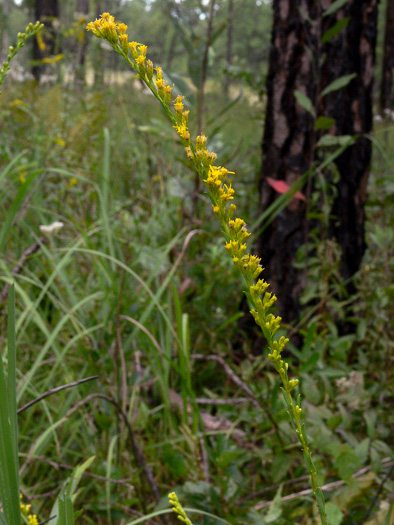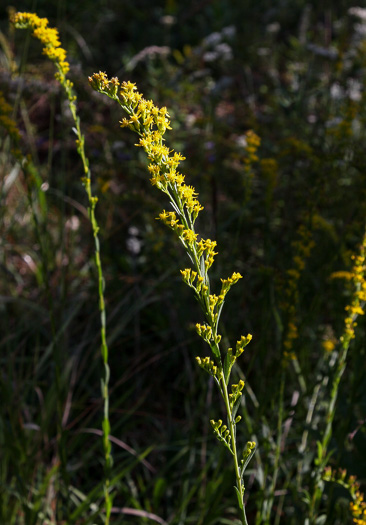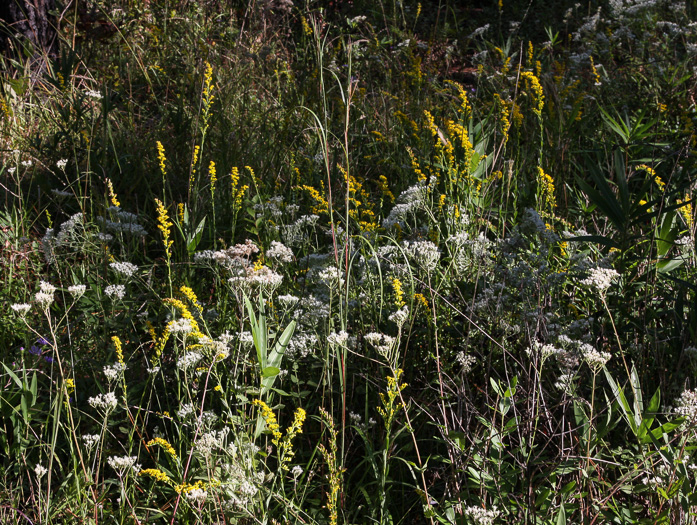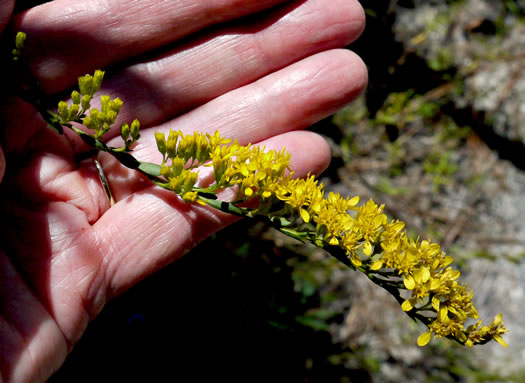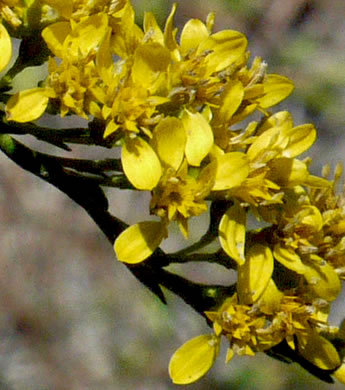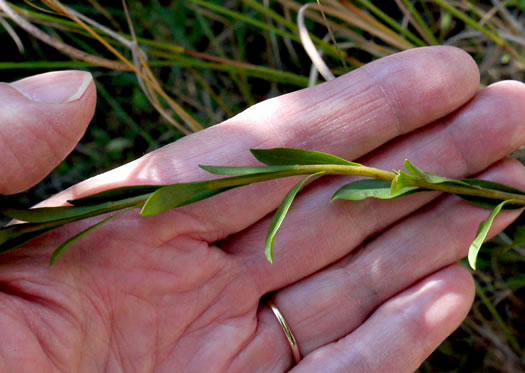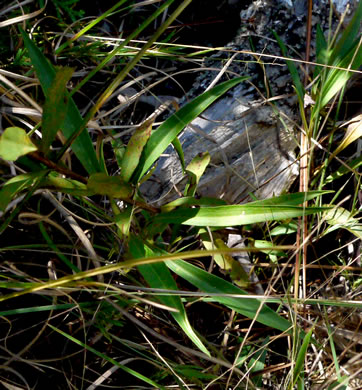Spermatophytes (seed plants): Angiosperms (flowering plants): Eudicots: Core Eudicots: Asterids: Campanulids: Asterales
WEAKLEY'S FLORA OF THE SOUTHEASTERN US (4/14/23):
Solidago austrina
FAMILY
Asteraceae
Go to FSUS key
Dig deeper at SERNEC, a consortium of southeastern herbaria.
There is no consensus among botanists that Southern Goldenrod and Graceful Goldenrod (S. gracillima) are truly distinct. Read more at Vascular Plants of North Carolina.
The distinction between S. gracillima s.s. and S. austrina seems to be warranted; differences include pappus length, number of ray and disc flowers, and range. Read more in Weakley's Flora.
INCLUDED WITHIN
PLANTS NATIONAL DATABASE:
Solidago gracillima
FAMILY
Asteraceae
SYNONYMOUS WITH Floristic Synthesis of North America. BONAP (Kartesz, 2021)
Solidago austrina
INCLUDED WITHIN Flora of North America north of Mexico, vol. 19-20-21 (2006)
Solidago stricta ssp. gracillima
INCLUDED WITHIN Floristic Synthesis of North America (Kartesz, 1999)
Solidago gracillima
INCLUDED WITHIN VASCULAR FLORA OF THE CAROLINAS (Radford, Ahles, & Bell, 1968) 179-49-018?:
Solidago gracillima FAMILY Asteraceae
SYNONYMOUS WITH Manual of the Southeastern Flora (Small, 1933, 1938)
Solidago austrina
COMMON NAME:
Piedmont Wand Goldenrod
To see larger pictures, click or hover over the thumbnails.
Bruce A. Sorrie bas_solidago_austrina4
October Richmond County NC
Flowers in a terminal 1-sided inflorescence, often w short arching branches, per Wildflowers of the Sandhills Region (Sorrie, 2011).
JK Marlow jkm161001_752b
October Chesterfield County SC
Carolina Sandhills National Wildlife Refuge
S. austrina has 2-4 ray flowers & 6-8 disc flowers (vs. S. gracillima: 3-7 ray & 9-13 disc), per Weakley's Flora (2023).
JK Marlow jkm161001_753
October Chesterfield County SC
Carolina Sandhills National Wildlife Refuge
Stem leaves rapidly smaller upward; margins minutely scabrous, per Wildflowers of the Sandhills Region (Sorrie, 2011).
WEAKLEY'S FLORA OF THE SOUTHEASTERN US (4/14/23):
Solidago austrina
FAMILY
Asteraceae
INCLUDED WITHIN
PLANTS NATIONAL DATABASE:
Solidago gracillima
FAMILY
Asteraceae
SYNONYMOUS WITH
Floristic Synthesis of North America. BONAP (Kartesz, 2021)
Solidago austrina
INCLUDED WITHIN
Flora of North America north of Mexico, vol. 19-20-21
Solidago stricta ssp. gracillima
INCLUDED WITHIN
Floristic Synthesis of North America (Kartesz, 1999)
Solidago gracillima
INCLUDED WITHIN
VASCULAR FLORA OF THE CAROLINAS (Radford, Ahles, & Bell, 1968) 179-49-018?:
Solidago gracillima
FAMILY
Asteraceae
SYNONYMOUS WITH
Manual of the Southeastern Flora (Small, 1933, 1938)
Solidago austrina
If a search such as "Carex leptalea var. leptalea" doesn't deliver the results you want, try "Carex leptalea".
Or, to minimize chances of a misspelling, try just "Carex le".
Less is more: If "pencil flower" doesn't deliver the results you want, try "pencil".

